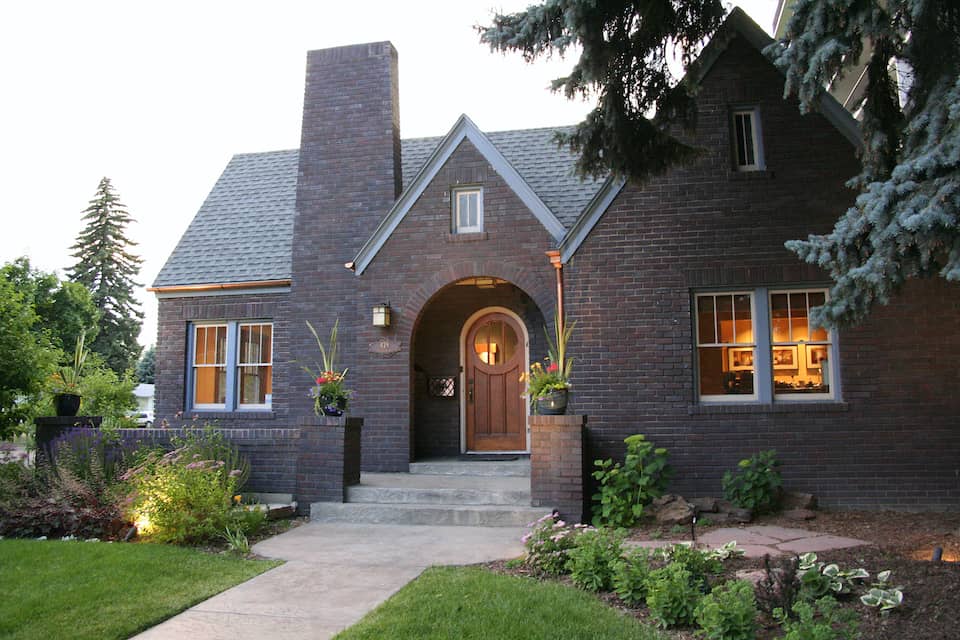 Tackling a remodel can be overwhelming. You may be feeling some uncertainty. You probably have a lot of questions. It’s a significant investment of time and money. We totally understand.
Tackling a remodel can be overwhelming. You may be feeling some uncertainty. You probably have a lot of questions. It’s a significant investment of time and money. We totally understand.
So, how do you begin, and what should you expect? At last weekend’s free workshop “Remodeling 101: Getting Started,” HighCraft co-founder Dwight Sailer presented the following SIX STEPS to start your project off right.
STEP 1: Define Your Needs and Style
What about your house isn’t working? Is your lifestyle changing? Does your kitchen need an update? Before you tackle a remodel or build a new home, be clear about what you want it to accomplish. Don’t worry about sketching a floor plan just yet; that will come later. But it’s never too early to read magazines, attend home shows and explore online idea galleries to gather images that help define what you like, and what you don’t like.
STEP 2: Consider Budget and Resale
It’s smart to think about project type and budget, and how many years you plan to live in your home, to determine if your remodel or new-build is a good investment. If you’re concerned about resale, then talk to a local Realtor® about the best strategies to increase home value. Once you decide the type of project to pursue, then identify a budget range that feels comfortable and explore financing options if necessary.
STEP 3: Identify Your Role
Remodeling is a time of change and can be stressful. So it’s important to be realistic about the part you want to play in managing your project, and the support you might need to make it the best experience possible. Homeowners typically assume one of the following three roles during a remodel:
Owner Contractor – You manage everything and everyone every day of the project. The lure of being your own general contractor (GC), or owner contractor, is to save money and retain ultimate control. But how much is your sanity worth? Being a GC requires a substantial chunk of time, flexibility, energy, diplomacy, patience and building know-how. As a GC, you will need to pull permits, place orders, receive deliveries, manage your budget, coordinate the construction schedule and handle any disputes with suppliers. You will hire, schedule and manage every subcontractor, from architects to electricians to carpenters and everyone in between. You may need to buy extra liability insurance coverage. And if anything goes wrong, you have little recourse to make it right because the buck stops with you.
Design-Bid-Build Shopper – You buy a plan, shop it around and hire a builder to help. This approach is for those who first work with an architect to design the plan, and then hire a builder to handle construction. In this scenario, you spend time “shopping” the plan around, interviewing contractors, and reviewing multiple bids to find a builder who will also serve as your GC. To increase the odds of a successful design-bid-build project, it’s important to bring your architect and builder together as soon as possible during the planning process. Early collaboration gets everyone on the same page to align the architect’s plan with a realistic budget and construction schedule. And if the lowest construction bid seems too good to be true, it probably is – you usually get what you pay for.
Design-Build Client – One full-service team supports you and your project from start to finish. Design-build is one-stop shopping at its best. It’s ideal for homeowners who neither have a plan nor a builder. An experienced design-build remodeling team will navigate and facilitate every detail of the planning and construction process so you don’t have to. The team is managed by one builder and consists of architects, interior designers engineers and construction specialists who work together to realize your vision while respecting your budget. The builder will serve as your GC and draw from a pool of trusted tradesmen to get the job done. This full-service approach typically results in enhanced communication, efficient use of time, thorough planning, innovative solutions, improved accountability, budget alignment and fewer surprises for the homeowner.
STEP 4: Establish a Realistic Timeline
Depending on the size of your project, it may take several months to plan and complete the necessary steps to begin construction. It’s a lot easier and cheaper to move a wall on paper than during the build out, so taking adequate time to plan is a wise investment. For remodeling, a good rule of thumb is to give pre-construction planning (STEPS 1 – 6) the same amount of time it takes to do the actual construction. Average remodeling times include:
|
|
For example, you should allow six to 12 weeks to plan and build out a bathroom remodel. Be leery of contractors who say they can start building tomorrow. Successful remodelers are detailed planners and quality craftsmen who take the time to do it right.
STEP 5: Research Your Possible Team
Because most homeowners hire a general contractor, STEPS 5 and 6 are written for residential remodelers who take the design-bid-build or design-build approach. By the time you reach this step, you may have a few builders in mind. If not, ask people you trust for a recommendation or two. Check out their websites and consider only those contractors who earn a thumbs-up from the Better Business Bureau.
Your time is valuable, so start by calling your top candidate. Ask them to explain: 1) their basic process, 2) the warranty they offer, and 3) the type of contract they use. Speaking of contracts, be sure you fully understand the differences between Fixed-Price, Time-and-Materials and Cost-Plus contracts. The latter two have the potential to significantly alter your budget. If anything about the initial telephone conversation makes you feel uncomfortable then trust your instincts and keep looking. If you feel good about their initial responses then schedule a time to meet with the contractor at your home.
STEP 6: Interview and Select a Contractor
Nobody would expect a doctor to make a diagnosis and write a prescription without first seeing the patient. The same holds true for a contractor who must see your home and understand your real need before they can propose a proper remodeling solution. This meeting is a good time to share thoughts about STEPS 1 – 4, which should include a description of the “pain” your living space is causing you. Ask the contractor to explain their process in more depth.
Tour the project space together and ask specific questions such as:
- How many projects like mine have you completed recently?
- Can you provide references?
- Do you guarantee start and completion dates?
- Are you licensed in this city? Are you insured for this type of project?
- Do you have professional architectural and interior design services to support my project?
- Will you draft all plans, and interpret zoning and planning requirements?
- Will you manage HOA or historic reviews, and obtain building permits?
- How is daily clean up, dust reduction and recycling handled?
If you are building a new custom home rather than remodeling, then suggest meeting at the contractor’s office to discuss your project. Their office is a reflection of their business and should represent a high level of professionalism.
If you feel comfortable with the contractor’s answers, and fully understand their process, then ask them to submit a proposal. Although the proposal is not a formal binding contract, it should include a preliminary estimate. If you are uncomfortable with anything, then discuss your concerns with the contractor or decline the proposal and meet with another builder. Every professional builder has a different personality and communication style, so be sure the contractor you welcome into your home is right for you.
If you like the initial proposal and agree to move forward, then the contractor will perform a thorough site review and work closely with you to develop your project. Once the project scope is fully defined and you approve the final design, a formal contract will be created and require your signature.
It’s important to get everything in writing, so be wary of a flimsy two-page contract. Once the contract is signed, then permits will be pulled, materials will be ordered, the project schedule will be created and construction can begin.
Our next free workshop will be Saturday, May 10th. For more information, call us at (970) 472-8100, or email info@highcraft.net.

